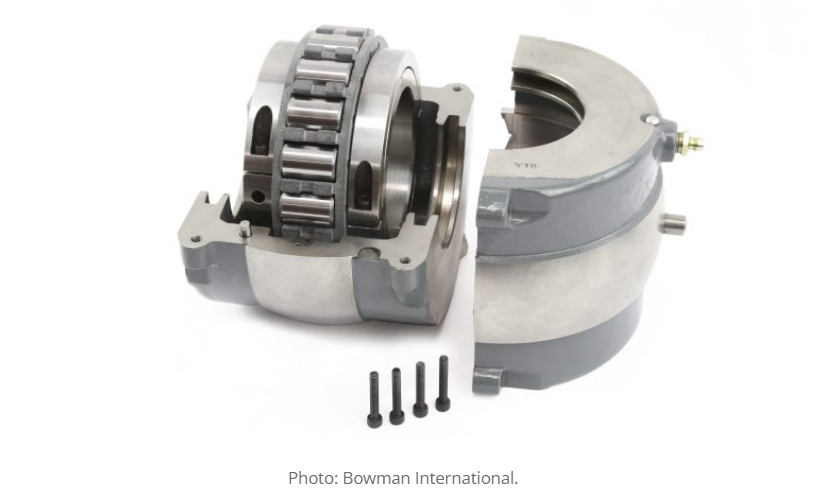Welcome to Sino Bearings web
24x7 HOTLINE:+86-28-81454188

 TECHNOLOGY
TECHNOLOGY
For the first time in split roller bearing history, there is a bearing specifically designed to accommodate high axial load as well as increased radial load applications across a range of heavy-side sectors.
Harnessing the unique component production capabilities of additive manufacturing, the new Bowman Advanced Split Roller Bearing delivers up to 75% higher radial load capacity and up to a 1000% increase in axial load capacity in both directions.
Here, Chris Ager, Business Unit Manager for Bowman International’s Split Bearing Division, explains the thought process behind the design and the significance of innovating products for specific applications:
Q: Describe how you went about innovating a ‘world-first’ bearing.
When innovating a new bearing, we prefer to use a ‘blank page’ design philosophy, rather than simply trying to evolve or change an existing product. This enables us to scrutinise each sub-component, and understand it’s strengths and weaknesses, before working out how to improve in accordance to the specific application we are designing for.
For example, a traditional split roller bearing accommodates axial load as a secondary consideration, relying on sliding contact from race lips alone. We knew that in order to innovate a bearing that would optimise performance and reduce failure in high-load applications, the axial force would need its own integrated axial rolling element – something that has long been impossible to achieve with traditional component manufacturing techniques. Harnessing new technologies such as additive manufacturing, we were able to overcome this barrier and succeed in making a bearing that accommodates much higher radial and axial forces with great success.
When innovating a product for a specific environment it’s important to design for both the primary issue (in this case high-load capacities), but also any secondary issues too. When studying high load applications, we identified two additional issues – the lack of available space around the system which made replacement and maintenance difficult, and the importance of maintaining uptime in busy and time-critical environments.
To meet these secondary needs, we knew that our new roller bearing needed to be split to the shaft. This would enable engineers to assemble it radially around the shaft, eliminating the need to disconnect the coupling and move other equipment such as motors, gearboxes or pumps in order to complete any maintenance. The radial assembly of our new bearing delivers up to ten times quicker installation times compared to equivalent solid bearings, saving time and money on planned and reactive maintenance.
Q: Explain why additive manufacturing was the right method for creating the new Bowman Advanced Split Roller Bearing.
Bearing components, by their very nature, tend to be round objects manufactured from rings or rods and the most complex component is usually the bearing cage. We knew that as soon as there was an emerging technology that could create complex forms in resilient materials, this would likely be the answer to creating a bearing cage with enhanced performance capabilities.
Additive manufacturing allowed us to create strong durable cages with highly complex geometries that could not be manufactured in any other way – the resulting cages create bearings with superior performance to other manufacturing methods, all at a reasonable price point and no tooling required.